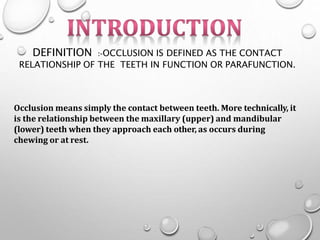class i occlusion definition
The upper incisor inclination is average and the overjet is 23 mm. A malocclusion is a misalignment or incorrect relation between the teeth of the two dental arches.

Occlusion Chapter 20 Definition Occlusion Is Defined As
The voluntary position of the dentition that allows for maximum contact when the teeth occlude.
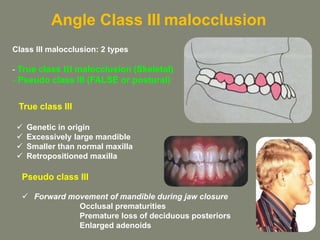
. Centric occlusion maximum intercuspation of maxillary and mandibular teeth. Edward Angle who is considered the father of modern orthodontics was the first to classify malocclusion. Angles described Normal occlusion Three types of malocclusion - Angles class I malocclusion Angles class II malocclusion - division 1 and division 2 Angles class III malocclusion.
Edward Angle who is considered the father of modern orthodontics was the first to classify malocclusionHe based his classifications on the relative position of the maxillary first molar. The relationship of the maxillary teeth to the mandibular teeth when the patients bite on their back teeth. Class II Malocclusion Class II Malocclusion Class II Malocclusion has two divisions to describe the position of the anterior teeth.
Angle published the first classification of malocclusion. The bringing of the opposing surfaces of the teeth of the two jaws into contact also. A3 The BEST textbook on dentistry.
People with a Class III occlusion usually have a chop-chop bite and the mandible is already forward. Class I II and III. The bringing of the opposing surfaces of the teeth of the two jaws into contact also.
Malocclusion is defined as improper. The plane of occlusion curve of spee should be flat to 15 mm deep. ANGLES CLASSIFICATION OF NORMAL OCCLUSION Mesiobuccal cusp of upper first permanent molar occludes into the buccal.
A Class I occlusion is what is typically considered the ideal and least destructive occlusal relationship. Maxillary marginal ridges and central fossae of. He based his classifications on the relative position of the permanent MAXILLARY FIRST MOLAR.
The relation between the surfaces when in contact. A definition of the optimal occlusion in the permanent dentition as defined by Lawrence F. Class II Malocclusion lower molar distally positioned relative to upper molar line of occlusion not specific.
Centric relation is the relationship of mandible to maxilla when the head of the condyle is in the most retruded unstrained position in the glenoid fossa. Occlusion is important because it can influence a persons facial profile and also the health of the oral cavity. A malocclusion is a misalignment or incorrect relation between the teeth of the two dental arches when they approach each other as the jaws close.
According to Angle the mesiobuccal cusp of the upper first molar should align with the buccal groove of the mandibular first molar. Occlusion in a dental context means simply the contact between teethMore technically it is the relationship between the maxillary upper and mandibular lower teeth when they approach each other as occurs during chewing or at rest. The articulatory system is in itself a triumvirate comprising the.
The profession seems to be in major chaos about occlusion This may be due to the lack of a precise classification of occlusal dysfunctions. When you look at the teeth from a lateral view the incisal edge of anterior teeth and the cusp tips of posterior teeth form a curved line. The act of occluding.
This is important because the classification of the bite also indicates whether there is a skeletal discrepancy. Class I malocclusion is defined as that malocclusion in which the lower incisors occlude on or directly beneath the cingulum plateau of the upper incisors Figure 21. That is the buccal cusp tips rest inside the fossae of the lower dentition instead of the cusp tips of the lowers resting inside the fossae of the upper.
A32 Class III malocclusion Lateral view Key Points. Occlusion is an integral part of dental treatment as dentists cannot repair move or remove teeth without affecting occlusion. Occlusions that are not ideal may be improved with dental treatments such as orthodontics.
Occlusion is defined as the contact relationship of the maxillary and mandibular teeth when the mouth is fully closed. Refers to the contact relationship between the maxillary and mandibular teeth when the jaws are in a fully closed position. Classifying Occlusion Board Exam Tips From Studentrdh Com Dentistry Iq The six keys to normal occlusion.
Its a deviation from the normal occlusion of teeth where all the upper teeth fit over the lower teeth. The teeth should all fit on a line of occlusion which in the. Class II Malocclusion A malocclusion where the molar relationship shows the buccal groove of the mandibular first molar distally positioned when in occlusion with the mesiobuccal cusp of the maxillary first molar.
This classification refers to the position of the first molars and t he way in which the upper ones fit together with the lower ones. Malocclusion of teeth is a misalignment of the biting surfaces of the upper and lower teeth. Posterior teeth are in cross bite.
Definition of occlusion. The complete obstruction of the breath passage in the articulation of a speech sound. Understanding the 3 Class Types of Malocclusion.
The state of being occluded. People with normal occlusion have a perfect bite and the points of the molars of each set. The Class I relationship is indeed most stable.
Classification of the bite occlusion is divided into three main categories. Overjet horizontal overlap of incisors. The anteroposterior relationship is normal but there may be vertical or transverse.
The state of being occluded. Although this is a gross oversimplification a Class I occlusal relationship is often identified by the lower anterior incisors sitting just behind the upper anterior incisors when biting down. Definition of occlusion.
Static occlusion refers to contact between teeth when the jaw is closed and stationary while dynamic occlusion refers to occlusal contacts made. Simplistic definition of occlusion. Class I malocclusion.
The way teeth meet and function. Anterior Maxillary dentition rest posterior to the mandibular anterior teeth. ANGLES CLASSIFICATION OF MALOCCLUSION In 1899 Edward H.
The masticatory system comprises the teeth the periodontal tissues and the articulatory system. The complete obstruction of the breath passage in the articulation of a speech sound. The classifications are based on the relationship of the mesiobuccal cusp of the maxillary first molar and the buccal groove of the mandibular first molar.
Class i is a normal relationship between teeth jaw and jaw. The relation between the surfaces when in contact. The act of occluding.
Every dentist should read.
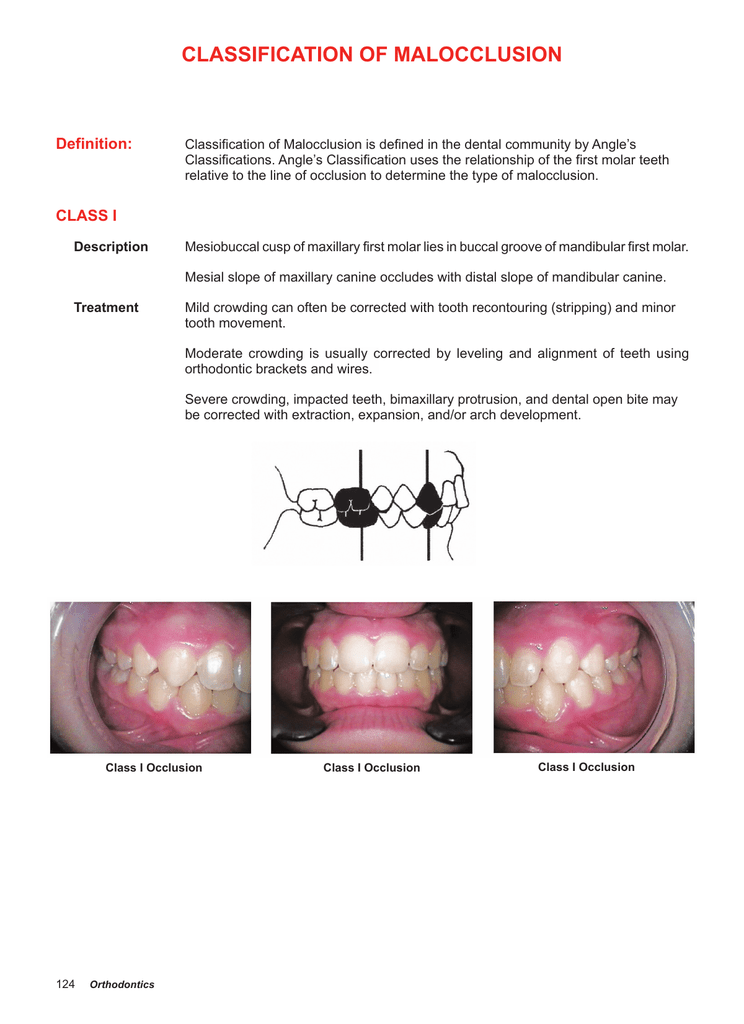
Classification Of Malocclusion

Malocclusions Definition Of Malocclusions By Medical Dictionary Medical Dictionary Medical Terms Orthodontic Treatment

Balanced Occlusion Contents Introduction Definition Difference Between Natural
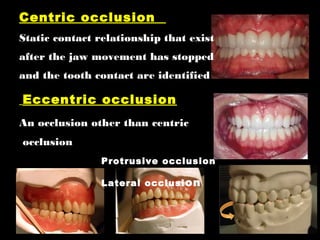
01 Occlusion In Prosthodontics Introduction Stomatognathic System

Occlusion Chapter 20 Definition Occlusion Is Defined As

Angle S Classification For Malocclusions Dentalnotebook

Classification Of Malocclusion

Do You Know What Occlusion Class You Have

Hereditary Factors May Cause Malocclusion Problems Such As Crossbite Overbite And Underbite No Worries There Is No Fix Teeth Perfect Teeth Teeth Treatment

Etiology Of Malocclusion Ppt Download

Occlusion Chapter 20 Definition Occlusion Is Defined As

Definition Malocclusion May Be Defined As A Condition Where There Is Departure From The Normal Relation Of The Teeth To Dental Prevention Dentist
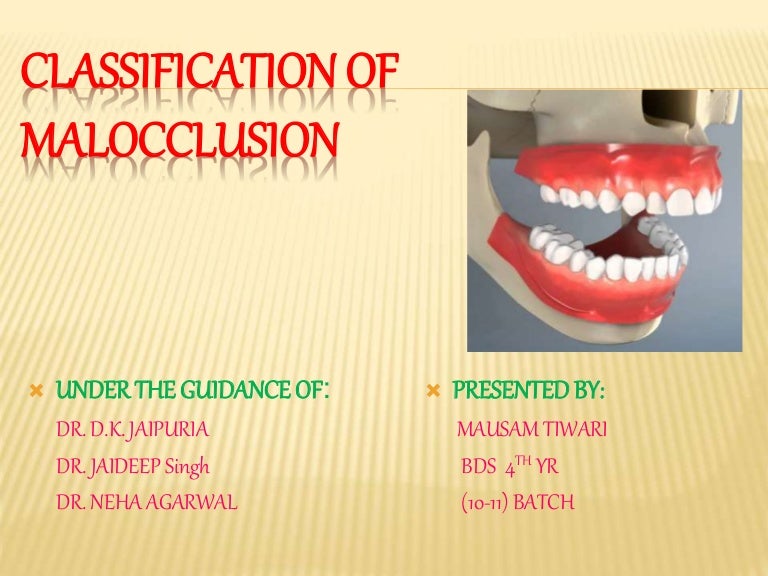
Classification Of Malocclusion

Names Of Teeth Tooth Parts Diastema Teeth Figure Definition Dentistry
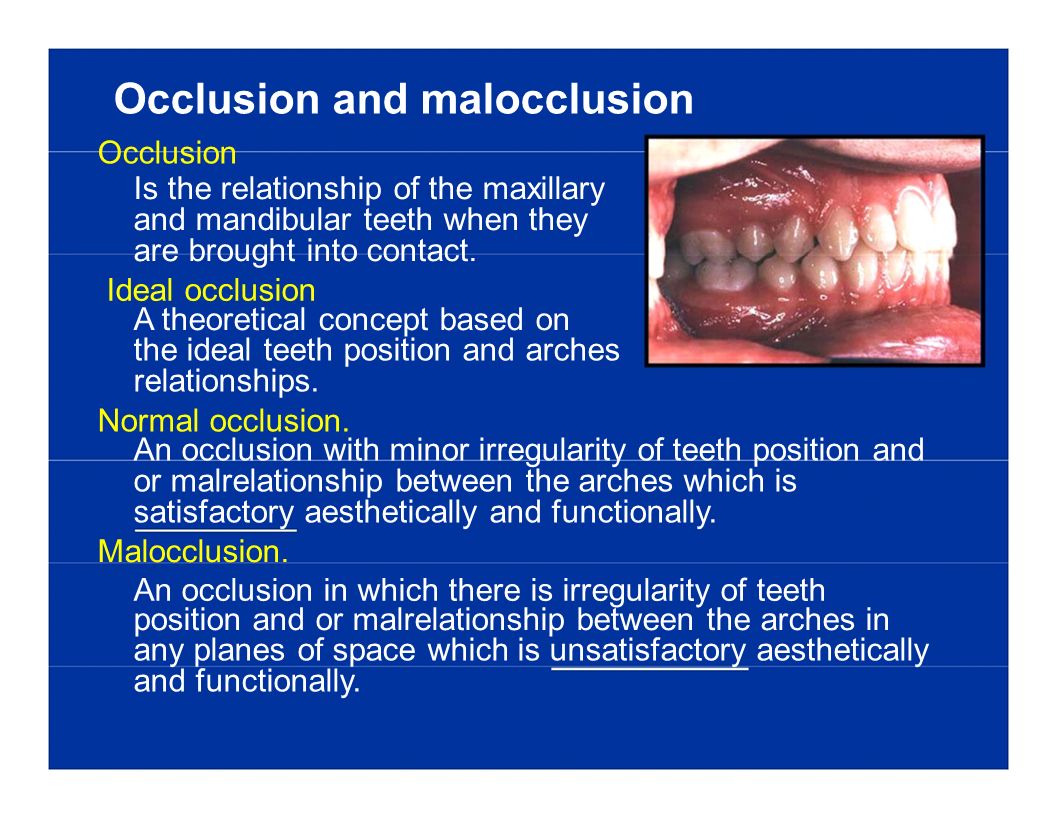
Introduction To Orthodontics Ppt Video Online Download

Pin On Dentistry Articles Spear Digest

Angle Classification Of Malocclusion And Blacks Classifications Flashcards Quizlet

